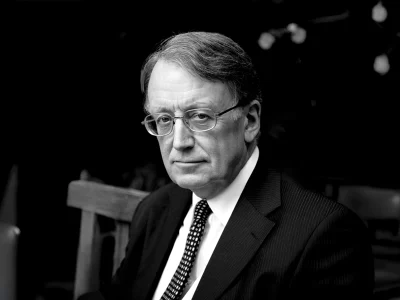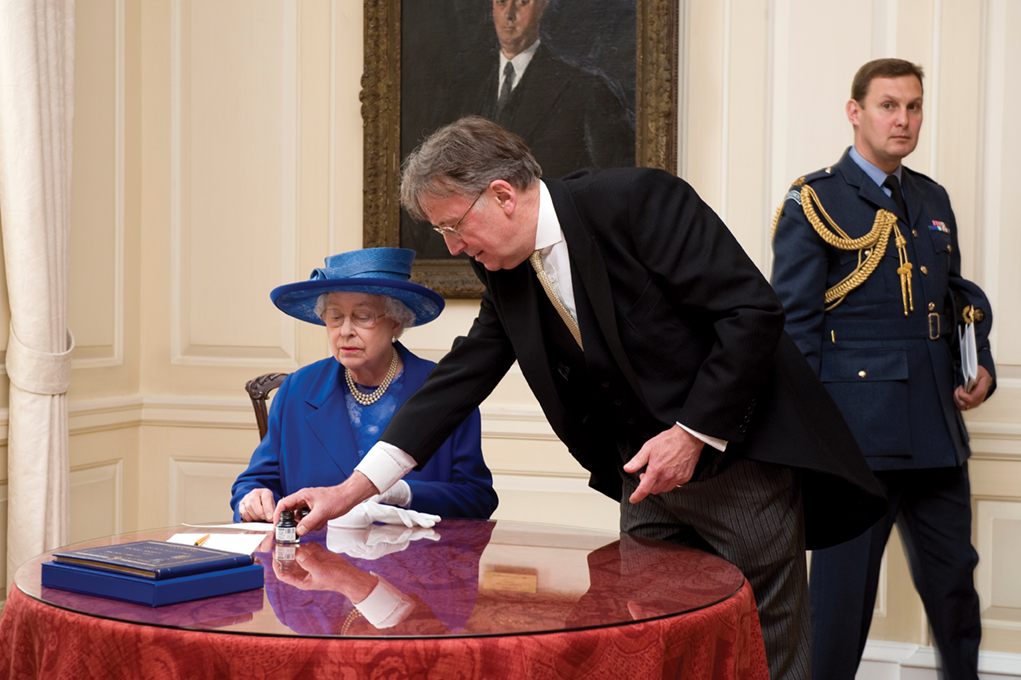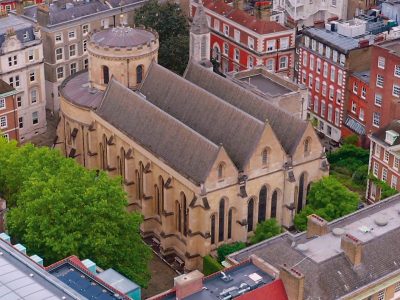
Careful, conscientious construction law expert who became President of the Queen’s Bench Division.
In the aftermath of the leaking by a CIA employee of classified documents about UK and US surveillance programmes, it fell to Sir Anthony May to review the state of the country’s spy agencies. As commissioner for the interception of communications, he gave them a clean bill of health, concluding that they did not engage in random mass intrusion into the affairs of law-abiding citizens. Any member of the public “who does not associate with potential terrorists or serious criminals” could be assured, he said, that the interception agencies did not have “the slightest interest in examining their emails, their phone or postal communications or their use of the internet”.
The Prime Minister, David Cameron, welcomed the report while civil liberties campaigners said May had failed to grapple with the leaks about surveillance programmes in use. Yet May, a retired senior Court of Appeal judge, could not simply be dismissed as pro-establishment; in the same report in 2014 he expressed concern over the “very large number (514,608) of requests for information by police and other law enforcement agencies about phone calls and other communications. It has the feel for being too many,” he said, and ordered a review that led to a tighter regime.
It typified the careful and conscientious approach May displayed throughout his career to the top ranks of the judiciary, where he became president of the Queen’s Bench Division. Quiet, reserved and conservative, May had the demeanour of the archetypal aloof judge. But Lord Neuberger of Abbotsbury, the former President of the UK Supreme Court, said: “Underneath his slightly detached, austere manner, he was an extremely kind man, decent, principled, intelligent. He did a good job on every case but didn’t search for headlines.”
Another Court of Appeal judge, Sir Peter Coulson, added: “He was an excellent judge and, in some ways, a little shy, which is why some thought he was a bit austere, but he had a great bark of a laugh which I used to hear a lot.” Coulson recalls a long case when the pair were barristers, Coulson junior to May. “I would relieve the tedium with drawings on Post-it notes. He always marked them out of ten in the bottom right-hand corner. I never got more than seven, so he obviously knew something about art.”
When a judge, May was due to hear the claim by Diana, Princess of Wales, against a gym where photographs were taken of her exercising and published in Paris Match, the first time a royal had sued in her own name. The day before the trial, Coulson bumped into May looking crestfallen. The case had settled at the last minute. “Do you think I could sue for loss of opportunity?” he asked.
Anthony Tristram Kenneth May was born in 1940 in Barnstaple, the only child of Joan (née Oldaker) and Kenneth May. Both were doctors: his mother had been evacuated to Devon while his father stayed working in London. They moved to Herefordshire where Joan was in charge of an evacuee home and from 1944 lived in Edgbaston. May went to Bradfield College and read Greats at Worcester College, Oxford, where he became a fellow.
He began working life in the insurance industry but after six months decided law might suit him better. Impressively able to teach himself new skills, May studied for the Bar exams while teaching classics at Oundle School. He met his wife, Stella (née Pattisson), through friends there over bridge and they married in 1968, soon moving out of London to Surrey. His wife and three children, Charmian, a solicitor, Lavinia, a GP, and Richard, a geologist, and nine grandchildren survive him.
In 1967, May was called to the Bar (Inner Temple, where he was a scholar) and joined a small set at 11 King’s Bench Walk, later Keating Chambers. It had a burgeoning construction practice under Donald Keating QC, a pioneer in that field, which May helped to develop along with the future judges Patrick Garland and John Dyson. There May undertook the editing of the fifth and sixth editions of what became the leading textbook, Keating on Construction Contracts, and he became expert in mastering the detail of massive multiparty construction and professional negligence cases and delivering oral judgments off the cuff.
May was in the vanguard on technology. He taught himself computer coding and was probably the first judge to use a computer in court. Glenys McDonald, his clerk, recalls that when they were first on Circuit, May would make notes in the usual red book and transcribe them in the evenings to his laptop. Back in London he sought permission from the Lord Chief Justice, Lord Lane, to use his laptop in court. Lane invited him to sit on the bench and demonstrate its use while he and Lord Justice Tasker Watkins stood in the well of the court to observe. Permission was granted. In an appeal in the McDonald’s libel trial, May duly sat with his laptop, alongside Lord Justice Pill using a nib pen with glass inkwell, and Mr Justice Keene a Biro. Sadly, his daughter Charmian recalls, his interest in technology did not extend to television. The family was without one until the day before England regained the Ashes in 1985.
May was in the vanguard on technology. He taught himself computer coding and was probably the first judge to use a computer in court.
May took silk in 1979, becoming a recorder in 1985. He went to the High Court bench in 1991 and to the Court of Appeal in 1997. He was Deputy Head of Civil Justice from 2000 to 2003; Vice President of the Queen’s Bench Division from 2002 to 2008 and President from 2008, retiring in 2011. He was popular with the ‘troops’ and gently encouraged them.

He became a Bencher at The Inner Temple in 1991, aged just 50, and was Treasurer in 2008, the year the Temple celebrated the 400th anniversary of the grant of its Royal Charter from James I. More than 22,000 people attended an Open Day. May addressed the congregation at a service in the Temple Church in the presence of Queen Elizabeth II, without a note. He and Michael Blair KC, Treasurer at Middle Temple, raised sufficient funds for a new stained-glass anniversary window and for the repair of the organ. The fabric of the church, said Robin Griffith-Jones, Master, will “forever bear the imprint of Anthony’s tireless work from 2008 to 2013”.
Among many cases, he ruled that soldiers abroad were protected by UK human rights obligations and, when Interceptions Commissioner, that police should not access journalists’ phone records without judicial authorisation. He worked with his fellow judge Sir Rupert Jackson on civil procedure, backing reforms to the Technology and Construction Court as well as Jackson’s later reforms to cut the costs of civil litigation.
An aptitude for hard work and organisation gave time for passions such as DIY. Projects ranged from building a treehouse to laying paving. He turned the wilderness at the family home into a substantial fruit and vegetable garden. Music was central to his life; he and his wife were members of the Guildford Choral Society for decades, with May chairman for ten. He loved walking and walked through most of Italy to Rome.
May retired in 2011 and in 2013 was appointed the Interceptions Commissioner. A year later he sustained near-fatal injuries when hit by a motorbike as he crossed the road in central London. Months of extensive treatment followed but he never fully recovered and retired from public life in 2015. The accident tragically cut short May’s career, but did not eclipse a life so richly lived, from singing and gardening to delivering justice at the highest levels.
Sir Anthony May, Court of Appeal judge and President of the Queen’s Bench Division, was born on 9 September 1940. He died on 30 December 2024, aged 84.
Courtesy of The Times / News Licensing
